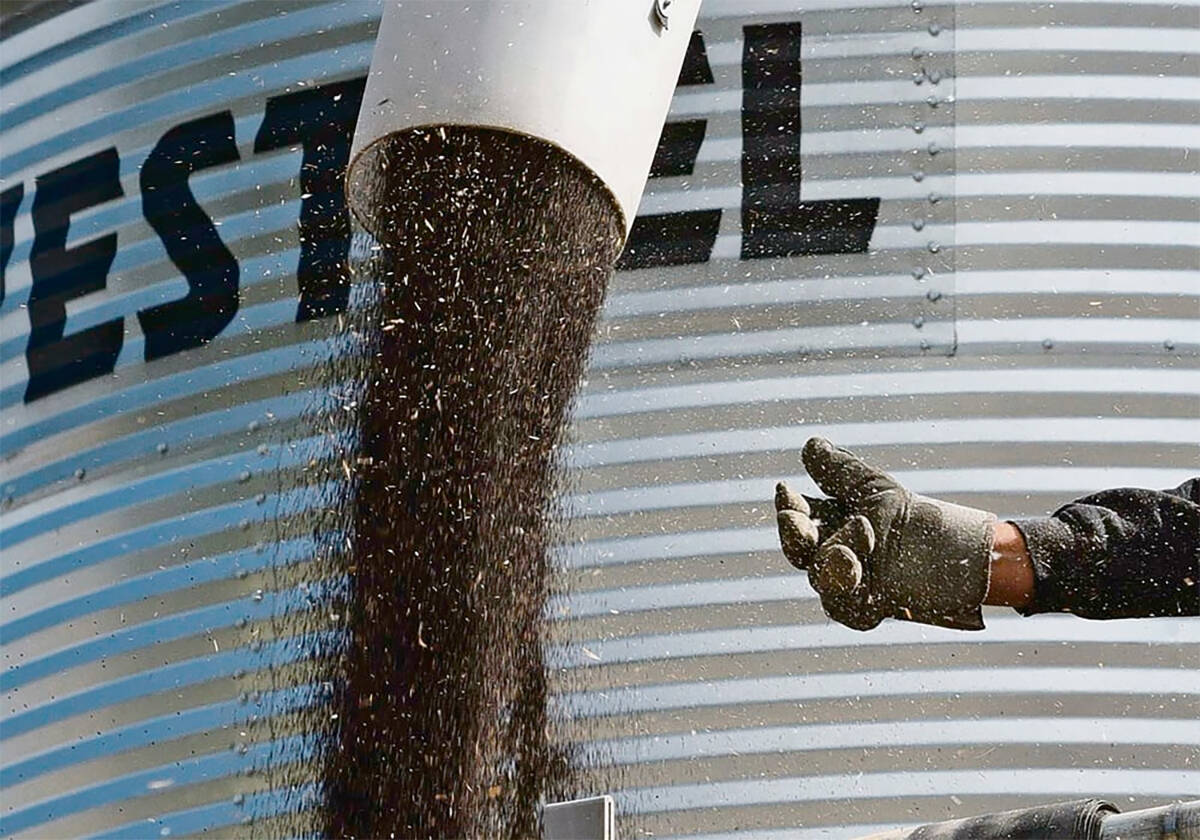Foreign buyers of Canadian durum toured Western Canada last week to see how Canadian durum is developed, produced, transported and shipped.
The tour, organized by the Canadian International Grains Institute, was part of an ongoing effort to familiarize foreign customers with Canadian durum and to solidify Canada’s reputation as the world’s top producer of high quality durum.
Canadian durum accounts for 60 to 70 percent of world trade in the crop.
“We’ve got participants from 10 different countries here to see the due diligence that goes into making the best quality durum wheat in the world,” said Earl Geddes, CIGI’s chief executive officer.
Read Also

Farmers urged to be grain-safe this fall
Working around grain bins comes with risk, from farmers falling to drowning in grain: Experts have five tips to help avoid grain-related accidents this harvest.
“In just about every case … buyers from those countries recognize that Canadian durum makes the best pasta and the best couscous of any durum in the world. Partly that’s because of the colour, partly it’s because of the protein content and functionality and partly it’s because of the reputation of the Canadian industry’s follow-up service and care of customers.”
Geddes said durum varieties developed at Agriculture Canada’s Semi-Arid Prairie Research Centre (SPARC) in Swift Current, Sask., and the University of Saskatchewan’s Crop Development Centre in Sask-atoon have positioned Canadian durum as the product against which all other durum is measured.
Canadian durum is widely recognized for its exceptional yellow colouring and its strong gluten strength, which is critically important to processors.
Geddes said Canada is miles ahead of its closest competitors when it comes to providing consistently high quality durum to overseas buyers.
Various steps have been taken to maintain that reputation, most notably the development of low-cadmium varieties, which are well adapted to western Canadian conditions, he added.
Non-traditional customers are also looking at Canadian durum to see if it can be used in new products that are not typically made with durum.
“The South Koreans are not big pasta producers but they are looking at Canadian durum use in noodles — yellow alkali noodles and white salted noodles — which are huge consumption products in that country,” Geddes said.
“They’re very excited about what they’ve seen.”
Canada’s most widely grown durum variety, AC Strongfield, still accounts for nearly 60 percent of total acreage in Western Canada and 35 to 40 percent of world trade.
Curtis Pozniak, a wheat breeder who heads the CDC’s durum breeding program, said Strongfield has set a high standard for varieties in the Canada Western Amber Durum class.
However, new varieties and lines now in development are delivering improvements in yield potential, agronomic performance and insect resistance.
Solid stemmed varieties developed by Agriculture Canada and the CDC are nearing commercial release and will significantly reduce losses caused by the wheat stem sawfly.
Midge resistant durum varieties are also in the pipeline, while recently released varieties such as CDC Verona combine the exceptional end use quality of Strongfield with improved straw strength and threshability.
Promote quality | Tour touted Canadian durum’s colour and gluten strength















